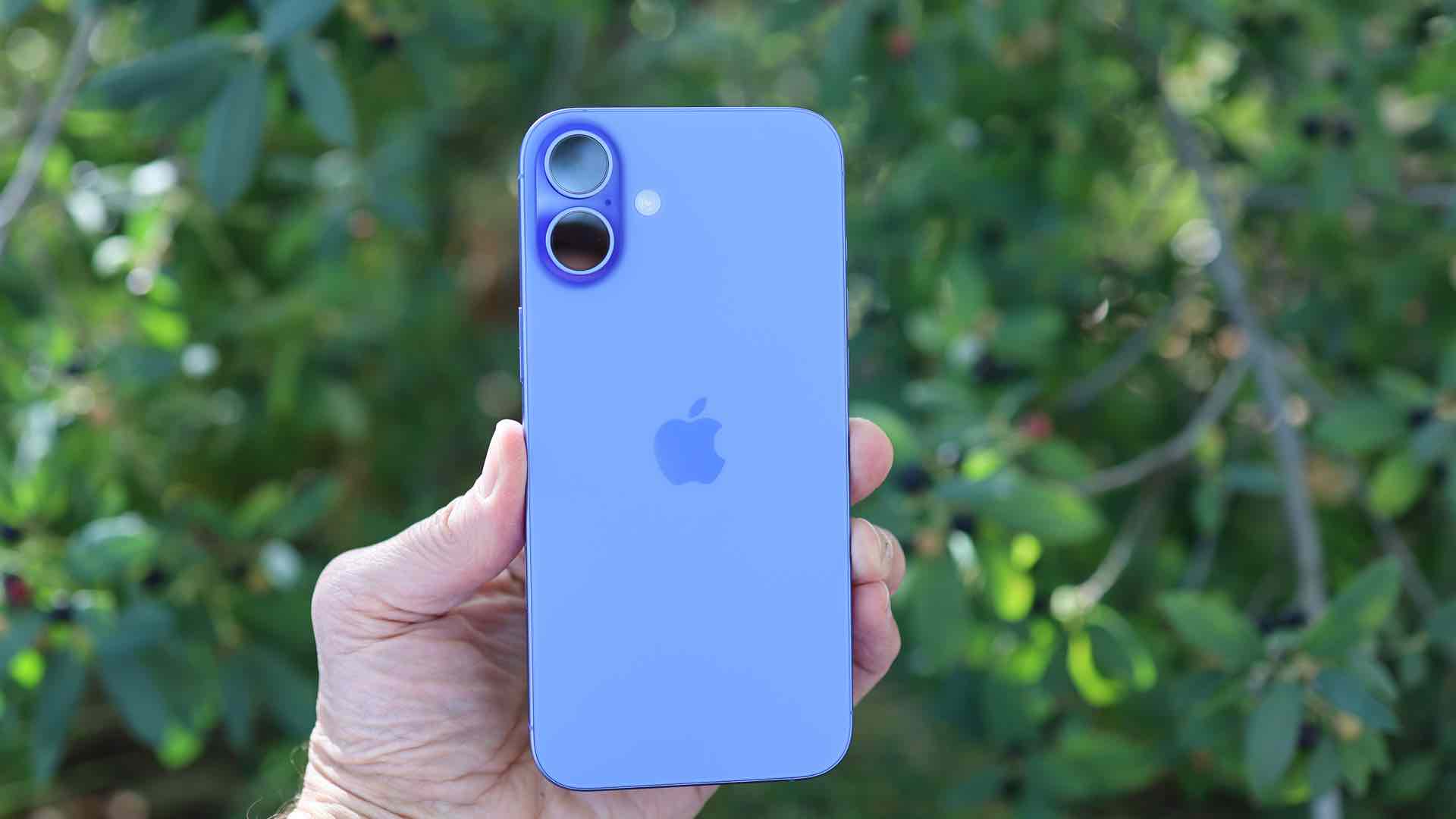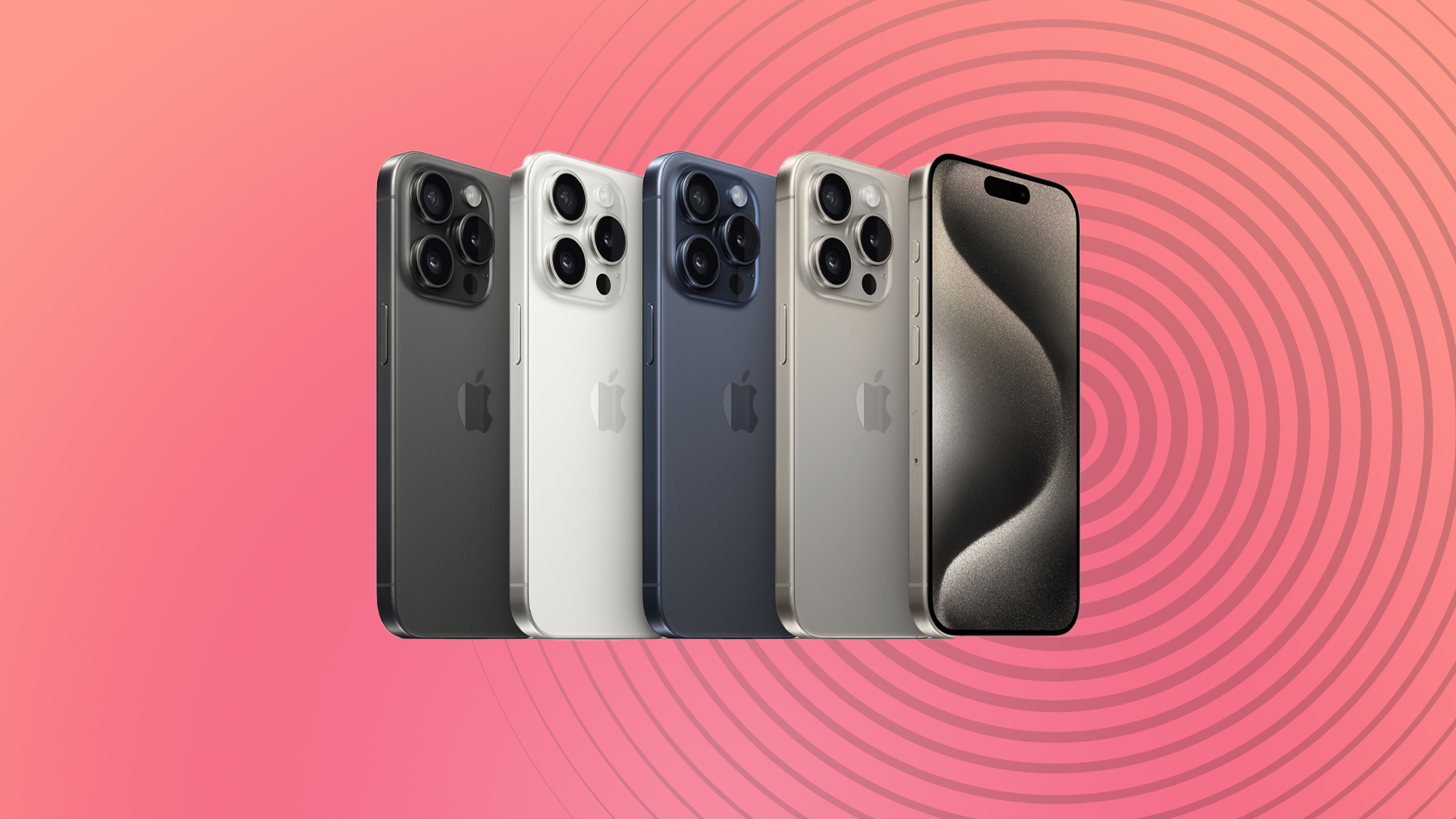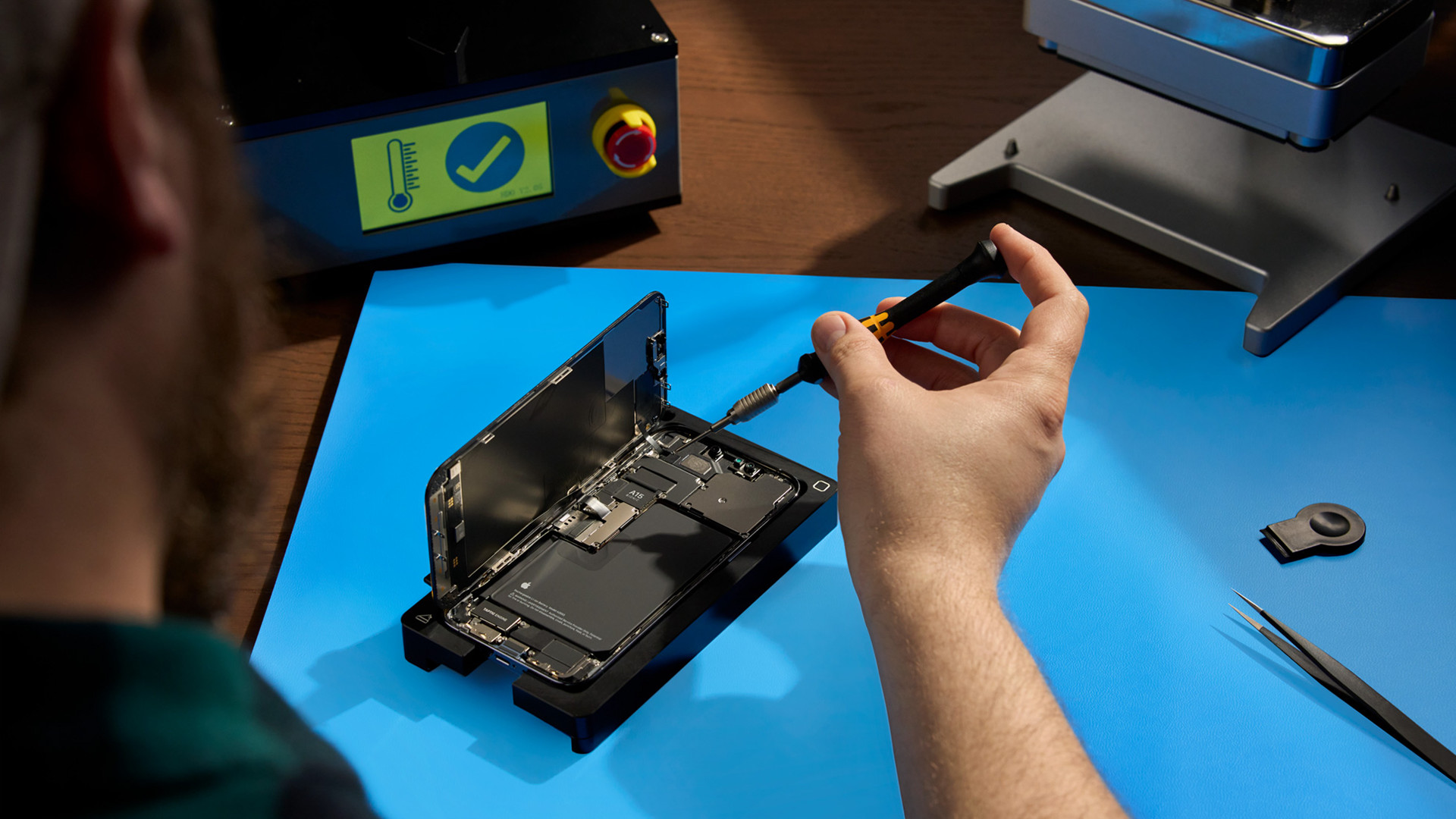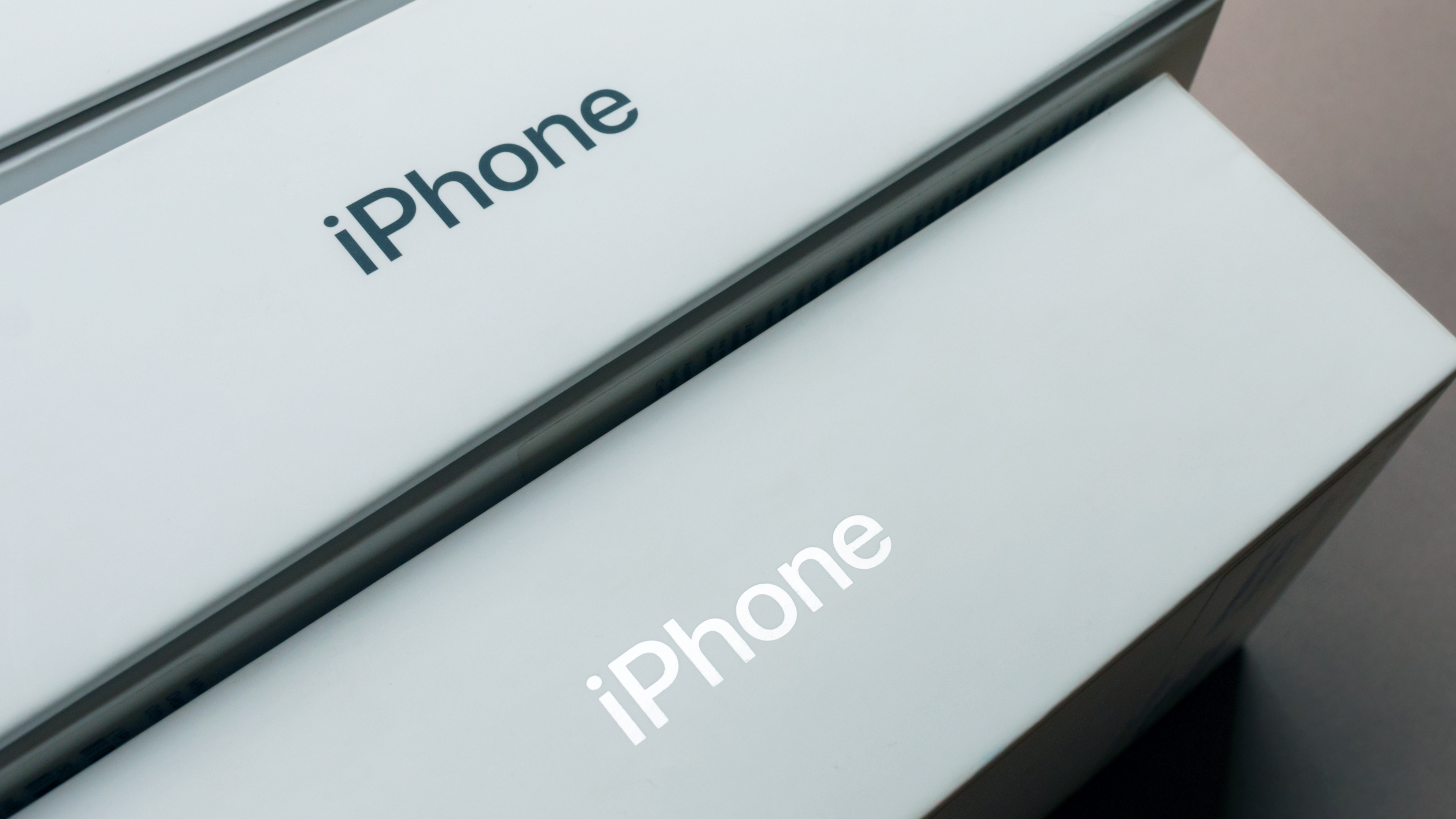
The figures and estimates presented in this article are provided by Google Finance and are accurate as of September 13, 2024. At no point should readers consider any part of this article to be financial or legal advice.
Apple has officially revealed the iPhone 16, iPhone 16 Plus, iPhone 16 Pro, and iPhone 16 Pro Max, with preorders live now and the phones going on sale Friday, September 20.
iPhone fans and those looking for their next phone upgrade will naturally be keeping an eye out for iPhone 16 deals in the coming months. This is especially true for UK residents who end up paying a premium for iPhones thanks to the high value of the pound.
In this article, we use the term “resident” to refer to anyone who lives in the UK, regardless of their legal definition.
Apple lists its iPhone lineup at the same numerical prices for all models and configurations in the US and UK, but depending on market conditions, the dollar is about 24% less valuable than the pound, meaning iPhones in the US are cheaper.
The recommended retail price (RRP) for the base iPhone 16 in the US is $799, the equivalent of £608.83 as of September 13, 2024.
However, any UK resident buying an iPhone in the US should be looking to buy an unlocked iPhone – that’s an iPhone that doesn’t come pre-connected to any American mobile network provider.
If you buy directly from Apple US, an unlocked iPhone 16 or iPhone 16 Plus costs $30 more than a carrier-locked one. The prices of the iPhone 16 Pro and iPhone 16 Pro Max are the same whether you buy a carrier-locked or unlocked model, but you should still buy an unlocked iPhone to avoid initiating a contract with a foreign mobile network provider.
Swipe to scroll horizontally
| Row 0 – Cell 0 | UK RRP (in GBP) | US RRP (in USD) | US RRP (in GBP) |
| iPhone 16 | £799 | $799 | £608.83 |
| iPhone 16 (unlocked) | N/A | $829 | £631.32 |
| iPhone 16 Plus | £899 | $899 | £685.03 |
| iPhone 16 Plus (unlocked) | N/A | $929 | £707.48 |
| iPhone 16 Pro | £999 | $999 | £761.23 |
| iPhone 16 Pro Max | £1,199 | $1,199 | £913.63 |
iPhones sold by Apple in the UK are unlocked. Prices listed are for the cheapest configuration of each iPhone model.
Obviously, it’s not going to be economical for a UK resident to travel to the US just to buy an iPhone, but those heading there anyway may be tempted by these lower prices.
However, before you head to the bureau de change, there are some factors to seriously consider before buying an iPhone in the US, from hardware differences to tax technicalities.
1. Sales tax

In the UK, the listed price of an item is typically what you pay at the point of sale, including relevant taxes and duties such as VAT.
This is because VAT – set at 20% since 2011 – is decided by the UK government, making it easy for manufacturers and retailers to factor it into prices.
This is decidedly not the case in the US, where sales taxes are decided and applied at not just the state level, but also by counties and cities. The amount of sales tax you’ll pay varies from 0% in Oregon, New Hampshire, and most of Montana and Delaware, up to a maximum of 13.5% in Arab County, Alabama.
Taking this maximum sales tax and applying it to the unlocked base-model iPhone 16 gives us a total price of $940.92 / £716.97 – a fair bit more expensive than the listed price of $829.
Granted, this still results in a discount when compared to prices in the UK. But it’s important to factor sales taxes into your budget if you’re hoping to buy an iPhone in tourist hotspots like New York City or Los Angeles.
2. Be ready for eSIM

Starting with the iPhone 14 family, iPhones sold in the US have eschewed the SIM tray for an eSIM-only approach.
An eSIM – or embedded SIM – is effectively a digital contract that allows you to connect to a carrier’s phone network without a physical SIM card.
Earlier this year, a report by Juniper Research suggested that as many as half of all connected devices in the US use eSIMs – they’re available in the UK, but a 2023 YouGov poll showed that adoption sits at around 4%.
Using an eSIM in the UK should be simple enough if you’re willing to go digital-only with your mobile network contract. But those who rely on prepaid SIMs when travelling, or just like to have the option, will be relieved that the SIM tray survives on new iPhones sold in the UK.
Carriers like EE, Vodafone, and O2 do offer eSIMs in the UK. We contacted all three companies to ask whether a US iPhone will work with an eSIM issued in the UK.
EE told us that any iPhone should work with an eSIM in the UK, and we have yet to hear back from Vodafone and O2.
3. Warranty and returns

Buying an iPhone from a US retailer may leave you stuck if your new device turns out to be faulty or broken.
We can’t yet verify whether Apple honors warranties for products purchased abroad – we have contacted Apple for clarification on this matter but received no response.
We can’t summarise the specifics of each retailer’s warranty, but we’d suggest this is especially relevant when dealing with retailers with no or limited presence in the UK.
If you need to send your iPhone back, a retailer in the US could ask you to pay for shipping costs, which comes with the possibility of your phone being held at customs or lost in transit.
We strongly advise you to carefully check the warranty and returns policy of any US retailer you’re considering purchasing an iPhone from, whether you plan to buy in person or by order.
For reference, the UK has strong consumer protection laws that give customers the right to cancel an order for a full refund within 14 days of the day the goods were received. The customer then has a further 14 days to return the goods. This applies to orders made online, by mail, and over the phone, but not in person.
Though Apple does not legally have to, the company’s returns policy indicates that this grace period is extended to purchases made at the Apple Store.
Furthermore, UK law mandates that faulty goods can be returned for a full refund if sold as faulty, and if a fault develops after purchase you have six years to make a claim for repair or replacement (five years in Scotland).
It may be harder to make warranty claims against international dealers simply because of the logistics of getting your iPhone across to the US. Those who value peace of mind in the rare chance of opening a faulty product may want to purchase an iPhone domestically.
As for AppleCare+, Apple’s insurance product for iPhones and other devices, coverage is international, though Apple may use locally available parts and models for repairs and replacements.
4. Delivery, customs duty, and VAT

Those looking to bring an iPhone into the country themselves may have concerns about customs duty at the airport or when their package arrives in the UK.
The good news for those physically bringing a new iPhone into the UK with them is that there is no customs duty on mobile phones bought for personal use, although you will have to declare goods at customs if the total value of goods brought into the UK exceeds £390, or £270 if travelling by private plane or private boat.
iPhones bought outside the UK or EU for business use are subject to a 3.3% customs duty. You must declare goods bought abroad for business purposes at customs.
As for deliveries, VAT is charged on all goods entering the UK by mail unless they are gifts worth £39 or less or non-excise goods worth between £39 and £135 (excise goods include alcohol, tobacco, and energy products). This includes packages sent from person-to-person.
Swipe to scroll horizontally
| Row 0 – Cell 0 | Type of goods | VAT charged in addition to listed price? |
| £39 or less | Gifts, including iPhones | No |
| £39 – £135 | Excise goods, including alcohol, tobacco, and energy products | Yes |
| £39 – £135 | Gifts sent to you by someone else, including iPhones | Yes |
| £39 – £135 | Non-excise goods, including iPhones | No |
| More than £135 | All non-exempt goods, including iPhones | Yes |
As mentioned, the rate of VAT is 20% for electronics. This bumps the price of the unlocked base iPhone 16 up from $829 to $994.80, which works out to around £757.59 – not far off of the standard list price in the UK, and that’s before shipping charges, which are themselves likely to be drastically higher than domestic delivery costs.
Any potential savings are barely more noticeable for the iPhone 16 Plus, iPhone 16 Pro, and iPhone 16 Pro Max.
You may be liable to pay further handling charges when your package is held for inspection at the UK border, charges which are notoriously difficult to predict.
Apple’s US website will not let you purchase an iPhone for delivery to a UK address, but other retailers may choose to allow this. You’d probably pay hefty shipping fees in addition to unpredictable customs charges. In short, it’s just not a good idea.
5. Frequency bands

The frequency bands that phones use to connect to cellular networks are different from country to country.
iPhone 16 series phones sold in the US support all of the frequency bands supported by their UK counterparts, so you don’t need to worry about this for Apple’s latest handsets. As for older models, we advise you to check Apple’s website and that of your carrier to assess whether a US-made iPhone will work on your chosen UK network.
We asked EE, Vodafone, and O2 about whether iPhones sold in the US are likely to have any issues connecting to UK frequencies. A representative of EE said: “We are not aware of any issues connecting to UK frequency bands,” but added, “EE cannot guarantee the performance of the device which was brought in the US [sic].”
We have not yet received a response from Vodafone or O2.
Buying an iPhone in the US – is it actually a good deal?
Ultimately, whether buying an iPhone in the US is a good idea depends on whether you were planning to travel to the US to begin with, and just how eager you are to save a bit of money.
If you’re tech savvy enough to deal with eSIM and stay apprised of local sales taxes, buying an iPhone on a trip to the US could be a viable way to save a bit – but honestly not a lot – of money.
This is barely worth it when you tally up the benefits of buying an iPhone domestically. Buying in the UK means you’ll have greater ability to exercise your consumer rights, easier warranty claims, cheaper delivery, more SIM options, and won’t even have to consider customs charges or additional taxes.
We’d go so far as to say you should never order an iPhone for delivery from the US to UK, as you’re likely to incur high shipping costs and may have to pay VAT and additional customs charges.
So there you have it. In general, we don’t think buying an iPhone in the US is a good idea if you’re a UK resident. But if you stay aware of the risk factors and really want to save a little money, the option’s there.
And if you’ve now decided where you’d like to buy your new iPhone, head on over to our guide to the best iPhones in 2024 for help deciding on which model is right for you.
You might also like
- Apple iPhone 16 Pro Max review: a beautiful, intelligent beast
- Apple iPhone 16 review: elevating the base to new heights
- iOS 18 lets you ditch Apple’s Camera app for a much better one – here’s how
